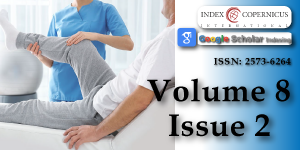From Adversity to Agency: Storytelling as a Tool for Building Children’s Resilience
Main Article Content
Abstract
Children who experience Adverse Childhood Experiences (ACEs)—including trauma, family instability, or significant loss—are at increased risk for enduring mental, emotional, and physical challenges, including conditions such as depression, anxiety, and chronic health issues. Without effective support, these adverse experiences can have lasting effects on a child’s well-being, often persisting into adulthood and impacting mental, emotional, and physical health outcomes over the long term.
Storytelling is a powerful method to support resilience in these children by enabling them to process emotions, make sense of complex experiences, and view themselves as active agents in their lives. By framing their experiences within personal narratives, children can create coherent stories that aid emotional regulation and support mental well-being. Through storytelling, children can frame their struggles as part of a larger, purposeful journey, fostering a sense of agency and self-worth.
Techniques such as narrative therapy, story circles, and resilience-themed books-exemplified by The Adventures of Gabriel—help children explore their experiences, visualise positive outcomes, and strengthen social bonds. Moreover, storytelling is an accessible tool that aids in perspective—taking, allowing children to relate their challenges to those of characters, which reinforces their ability to overcome adversity and navigate life’s complexities with strength and optimism.
Article Details
Copyright (c) 2024 Markland K.

This work is licensed under a Creative Commons Attribution 4.0 International License.
Felitti VJ, Anda RF, Nordenberg D, Williamson DF, Spitz AM, Edwards V, et al. Relationship of childhood abuse and household dysfunction to many of the leading causes of death in adults: The Adverse Childhood Experiences (ACE) Study. Am J Prev Med. 1998;14(4):245-258.
Shonkoff JP, Boyce WT, McEwen BS. Neuroscience, molecular biology, and the childhood roots of health disparities: building a new framework for health promotion and disease prevention. JAMA. 2012;301(21).
Moffitt TE, Arseneault L, Belsky D, Dickson N, Hancox RJ, Harrington H, et al. A gradient of childhood self-control predicts health, wealth, and public safety. Proc Natl Acad Sci U S A. 2011;108(7):2693-2698.
Hughes K, Bellis MA, Hardcastle KA, Sethi D, Butchart A, Mikton C, et al. The effect of multiple adverse childhood experiences on health: a systematic review and meta-analysis. Lancet Public Health. 2017;2(8).
Anda RF, Felitti VJ, Bremner JD, Walker JD, Whitfield C, Perry BD, et al. The enduring effects of abuse and related adverse experiences in childhood. Eur Arch Psychiatry Clin Neurosci. 2006;256(3):174-186.
Pennebaker JW, Smyth JM. Opening Up by Writing It Down: How Expressive Writing Improves Health and Eases Emotional Pain. 3rd ed. New York: The Guilford Press; 2016.
McAdams DP. Narrative identity: What is it? What does it do? How do you measure it? Imagin Cogn Pers. 2018;37(4):359-372.
Markland K, Markland G. The Adventures of Gabriel. Babysteps Publishing 2024; ISBN 9798340794543. www.theadventuresofgabriel.com.
White M, Epston D. Narrative Means to Therapeutic Ends. New York: W.W. Norton; 1990.
Decety J, Cowell JM. The complex relation between morality and empathy. Trends Cogn Sci. 2015;19(7):337-339.
Beaudoin MN, Moersch MA, Evare B. The effectiveness of narrative therapy with children’s social and emotional skill development: An empirical study of 813 problem-solving stories. Res Psychotherapy. 2016;19(3):238-245.
Rizzolatti G, Sinigaglia C. The Mirror Mechanism: A Basic Principle of Brain Function. Oxford University Press; 2016.
Miller EK, Lundqvist M, Bastos AM. Working Memory: Delay Activity, Yes! Persistent Activity? Maybe Not. J Neurosci. 2019;38(32): 7053-7064.





